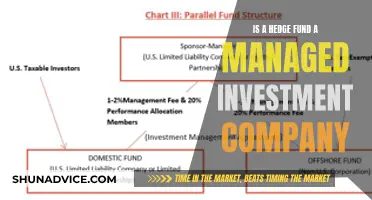
Building an investment portfolio can be a challenging task, but there are ways to do it for free. It is important to consider your goals, time horizon, and risk tolerance when creating a portfolio. Your risk tolerance is tied to how much time you have before your financial goal and how you handle market volatility. Robo-advisors are an inexpensive alternative for those who want a more hands-off approach to portfolio management. They take your risk tolerance and goals into account and build and manage an investment portfolio for you. There are also free investment portfolio management software and apps available, such as Empower Personal Dashboard, Kubera Portfolio Tracker, and Google Sheets with Functions. These tools can help you track your investments and provide analysis and insights. Additionally, you can use brokerage accounts that offer portfolio management features, such as Vanguard Personal Advisor Services. By utilising these free options, you can effectively build and manage your investment portfolio without incurring additional costs.
| Characteristics | Values |
|---|---|
| Investment portfolio management apps | Provide a dashboard to see your total portfolio composition and performance at a glance |
| Offer tracking and planning features, relevant news updates and comparison tools | |
| Robo-advisors | Manage your portfolio for you |
| Financial advisors | Manage your portfolio for you and provide more personalised investment guidance |
| Online brokers | Allow you to manage your portfolio yourself |
| Investment portfolio trackers | Provide a single dashboard to see all your investments |
| Investment portfolio builders | Help you to decide how much help you want, choose an account, choose your investments, determine the best asset allocation for you and rebalance your investment portfolio as needed |
What You'll Learn

Diversify your portfolio to manage risk
Diversifying your portfolio is a strategy that can help you manage risk and maximise returns. It involves spreading your investments across different asset classes, industries, companies, and other categories. Diversification is important because it helps to reduce the volatility of your portfolio over time and can help to protect against losses.
There are several ways to diversify your portfolio:
- Diversify across sectors and industries: For example, investing in transportation, technology, and media companies.
- Diversify across companies: For instance, investing in multiple airline providers instead of just one.
- Diversify across asset classes: This includes investing in stocks, bonds, real estate, cryptocurrency, commodities, and precious metals.
- Diversify across borders: Invest in companies from different countries to reduce political, geopolitical, and international risks.
- Diversify across time frames: Consider a mix of short-term and long-term investments to balance liquidity and potential returns.
It's important to note that diversification may lead to lower overall portfolio returns and can be more complicated and expensive to manage. Additionally, it's not possible to eliminate all risk through diversification. However, by diversifying your portfolio, you can aim to find a balance between risk and return, ultimately helping you achieve your financial goals.
Mutual Fund Strategies: Long-Term Investments for Financial Freedom
You may want to see also

Understand your risk tolerance
Understanding your risk tolerance is a crucial step in building an investment portfolio. Risk tolerance refers to the degree of risk an investor is willing to take on, given the volatility of an investment's value. It is a measure of the amount of loss an investor can withstand within their portfolio. Knowing your risk tolerance will help you plan your portfolio, determining how you invest.
There are three main types of risk tolerance: aggressive, moderate, and conservative. Aggressive investors have a higher risk tolerance and are willing to risk losing money for the chance of better results. They tend to be market-savvy and focus on capital appreciation rather than income preservation. Their portfolios often include stocks, with little to no allocation to bonds or cash. Moderate investors, on the other hand, aim to balance opportunities and risks. Their portfolios usually consist of a mix of stocks and bonds, such as a 50/50 or 60/40 structure. Finally, conservative investors have a lower risk tolerance and seek investments with guaranteed returns. They prefer vehicles that are highly liquid and guaranteed, such as bank certificates of deposit, money markets, or U.S. Treasuries.
Several factors contribute to an investor's risk tolerance. Age is one factor, with younger people generally having a longer time horizon and being more risk-tolerant. However, it is important to note that people are living longer, so investors can remain aggressive for longer as well. Net worth and available risk capital are also crucial considerations. Investors with a higher net worth and more liquid capital can afford to take on more risk. Additionally, investment goals play a role in risk tolerance. If you are investing for a child's education or your retirement, you may want to be more conservative. In contrast, if you are using disposable income to earn extra money, you may be willing to take on more risk.
It is important to carefully consider your risk tolerance and not just follow conventional wisdom. For example, older individuals might not need to shift everything to conservative investments if they have enough to live off the interest of their investments. Similarly, younger investors might need to be more conservative if they have a short-term investment horizon.
To assess your risk tolerance, you can utilise the various free online risk-related surveys and questionnaires available. These tools can provide a starting point for understanding your risk tolerance and estimating asset allocations. However, it is important to keep in mind that the results may be biased towards financial products or services sold by the sponsoring companies or individuals.
American Funds: The Investment Agent's Favorite Choice Explained
You may want to see also

Choose a free portfolio management app
When choosing a free portfolio management app, it's important to consider your needs and preferences. Here are some popular and highly-rated options to help you get started:
Empower (Formerly Personal Capital)
Empower is a comprehensive platform that offers various features to help you manage your finances and investments. With over three million users and more than $1.4 trillion in assets under management, it is a trusted and widely-used app. Empower allows you to sync your investment, bank, credit card, retirement, and taxable accounts to track your net worth and create savings plans. It provides easy-to-read graphs and charts to monitor your performance, asset allocation, and fees. Additionally, it offers an Investment Checkup feature, retirement planning tools, and access to personal wealth management advisors.
SigFig Wealth Management
SigFig Wealth Management offers a free app that automatically syncs your investment accounts into a single dashboard, providing real-time insights into your stocks, mutual funds, and exchange-traded funds (ETFs). It connects with over 50 brokerages, including major ones like Schwab and Fidelity. While the app itself is free, SigFig also offers a fee-based version that provides personalized investment plans based on your risk tolerance and time horizon.
Sharesight
Sharesight is a portfolio tracking app that can monitor the performance of your investments using data from over 60 stock exchanges worldwide. It can track various asset classes, including stocks, ETFs, mutual funds, cryptocurrencies, real estate, private equity, and fixed-income investments. Sharesight offers annualized return calculations, performance reporting against benchmarks, asset allocation monitoring, and dividend tracking. The basic service is free for up to ten holdings or one portfolio, with additional reporting features available for a monthly fee.
Yahoo Finance
The Yahoo Finance app provides a simple and user-friendly interface for tracking your stocks, commodities, bonds, and currencies. It allows you to create and monitor your personal portfolio, sync multiple portfolios across devices, and set up personalized alerts. You can also stay informed with real-time stock and investment information, market movement notifications, and access to business news and press releases.
Ziggma
Ziggma is a platform that combines portfolio insights with stock research tools. It offers a 360-degree portfolio view, allowing you to track performance, portfolio quality, yield, and risk in one place. Ziggma lets you link unlimited investment and retirement accounts and provides a consolidated view of your investments. Additionally, it offers portfolio simulation tools, stock research features, and a dividend tracker. While the basic version is free, the premium version includes additional features like portfolio simulators and model portfolios.
These apps provide a range of features to help you manage and track your investments effectively. Consider your specific needs, the types of investments you hold, and the level of insights you require to make an informed decision about which free portfolio management app is best suited for you.
Mutual Funds in the Philippines: Best Places to Invest
You may want to see also

Use a robo-advisor
Using a robo-advisor is a great way to automate your investing and manage your money without taking the DIY route. Robo-advisors are an inexpensive alternative to financial advisors. They take your risk tolerance and overall goals into account and build and manage an investment portfolio for you.
Robo-advisors use computer algorithms to build and manage an investment portfolio for you, based on your goals and your tolerance for risk. They are a low-cost, online investing platform. While financial professionals typically design the investing strategies, the ongoing day-to-day management of the portfolios is handled by computers.
Robo-advisors are a good option for those who want to be completely hands-off with their portfolio management. They are also a good option for those who want to save on fees. Robo-advisors tend to charge lower fees than traditional financial advisors.
Robo-advisors are paid through their account management fee, which is usually shown as a percentage, such as 0.25%. This is the fee you pay annually to have an account at a robo-advisor.
Robo-advisors also charge expense ratios, which are like management fees, only they are paid not to the robo-advisor, but to the investments the robo-advisor uses. Mutual funds, index funds and exchange-traded funds all charge this annual fee to cover the costs of running the fund.
Robo-advisors can be a good option for those who want to save for retirement but don't have the time or knowledge to build their own investment portfolio. They can also be a good option for those who want to invest in a variety of assets but don't want to manage their own portfolio.
Some robo-advisors offer additional features such as access to human financial advisors, cash management, margin lending, and high-yield cash accounts.
When choosing a robo-advisor, consider factors such as management fees, expense ratios, account types, investments, rebalancing, and access to human advisors.
Some popular robo-advisors include:
- Wealthfront
- Betterment
- SoFi Automated Investing
- M1 Finance
- Acorns
- Ellevest
- ETRADE Core Portfolios
- Merrill Guided Investing
Venture Capital's XAI Investment: Who's Leading the Pack?
You may want to see also

Monitor and adjust your portfolio regularly
Monitoring and adjusting your investment portfolio is crucial to ensuring it remains aligned with your goals. Here are some detailed instructions on how to do this:
Firstly, it is important to understand that your portfolio should be regularly monitored and adjusted to reflect any changes in your life circumstances, economic conditions, and market trends. A good rule of thumb is to check in on your portfolio twice a year to ensure your asset allocation aligns with your goals. You may also need to rebalance your portfolio if the market has been particularly volatile. Additionally, life events such as getting married, becoming a parent, receiving an inheritance, or nearing retirement may require you to adjust your investment strategy.
When monitoring your portfolio, it is essential to have a clear understanding of your risk tolerance and time horizon. Your risk tolerance refers to how much you are willing to lose in the short term to achieve your financial goals, while your time horizon is the length of time you need to hold your investments before needing the money. These two factors are closely linked, as a longer time horizon generally allows for a more aggressive investment strategy, while a shorter time horizon may require a more conservative approach to avoid potential losses.
To effectively monitor your portfolio, consider utilising portfolio management apps or software. These tools can aggregate data from your various investment accounts, providing a holistic view of your entire portfolio. Look for apps that offer real-time data, performance dashboards, tracking and planning features, relevant news updates, and comparison tools to benchmark your portfolio's performance against relevant indices.
When adjusting your portfolio, the key lies in rebalancing your asset allocation. Asset allocation refers to how your investment funds are distributed across different asset classes, such as stocks, bonds, mutual funds, and alternative investments. Over time, your chosen asset allocation may get disrupted, especially if certain investments perform better than others. To rebalance your portfolio, you may need to sell some investments or purchase additional assets to restore your desired allocation. Some investments, like target-date funds, automatically rebalance themselves over time.
It is worth noting that the frequency of rebalancing depends on various factors. Some advisors recommend rebalancing at set intervals, such as every six or twelve months, while others suggest monitoring for significant shifts in your asset allocation. For example, if your portfolio is 60% stocks and it increases to 65% due to strong stock market performance, you may want to sell some stocks or invest in other asset classes to return to your desired allocation.
Remember, building and maintaining an investment portfolio is a dynamic process that requires regular care and attention. By actively monitoring and adjusting your portfolio, you can ensure that it remains aligned with your financial goals and reflects your risk tolerance and time horizon.
Bank Loan Funds: A Smart Investment Choice
You may want to see also







